





































Julie B. is known around the office for her determination, her resilience and her faithful service dog, Oreo.
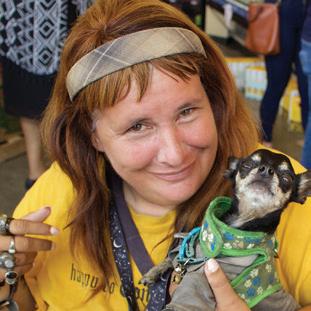
Marie Antoinette and housing activists met before a Metro council meeting to support the 31,000 Homes Campaign
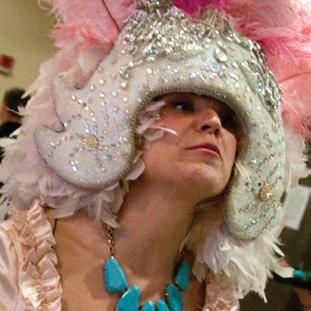
A new Netflix documentary series explores stories about the people who work and live in the Filipino Happy Jail.
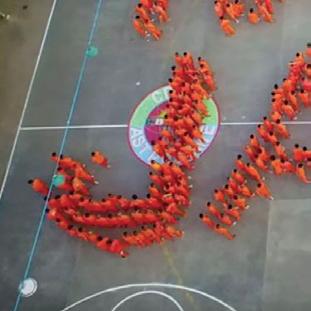
Our vendors write in this issue about golden souls, trusting in God, tomorrow, unknown musicians and The Beatles.
Cathy Jennings, Chair Tom Wills, Bruce Doeg, Demetria Kalodimos, Ann Bourland
Linda Bailey • Amanda Haggard • Hannah Herner • Tom Wills • Carlos Barria • Makini Brice • Ridley Wills II • Alvine
• Joe Nolan • Norma B. • Jaqueline H.
• Maurice B. • John H. • Julie B. • Mr. Mysterio • Cynthia P. • Harold B. • David “Clinecasso” C. • Victor J.





Cathy Jennings • Tom Wills • Joe First
• Andy Shapiro • Michael Reilly • Ann Bourland • Patti George • Linda Miller •
Deborah Narrigan • John Jennings • Barbara Womack • Colleen Kelly • Janet Kerwood • Logan Ebel • Christing Doeg • Laura Birdsall
• Nancy Kirkland • Mary Smith • Andrew Smith • Ellen Fletcher • Michael Chavarria
Will Connelly, Tasha F. Lemley, Steven Samra, and Tom WIlls Contributor Co-Founders
Editorials and features in The Contributor are the perspectives of the authors. Submissions of news, opinion, fiction, art and poetry are welcomed. The Contributor reserves the right to edit any submissions. The Contributor cannot and will not endorse any political candidate. Submissions may be emailed to: editorial@thecontributor.org




Requests to volunteer, donate, or purchase subscriptions can be emailed to: info@thecontributor.org Please email advertising requests to: advertising@thecontributor.org





Mailng Address
The Contributor P.O. Box 332023, Nashville, TN 37203
Editor’s Office: 615.499.6826 Vendor Office: 615.829.6829
Proud Member of:



Printed at:
Follow The Contributor:
Copyright © 2018 The Contributor, Inc. All rights reserved.

 BY TOM WILLS, CO-FOUNDER
BY TOM WILLS, CO-FOUNDER
The paper you just paid for was bought by someone else first, otherwise it wouldn’t exist. That’s how The Contributor works. A vendor who experienced homelessness paid 50 cents for this paper and then sold it to you. By buying it and taking it with you, you’ve just encouraged that vendor to buy another. BOOM! That’s the solution. Now keep reading. This paper has something to say to you.


Street papers provide income for the homeless and initiate a conversation about homelessness and poverty. In 2007, The Contributor founders met at the Nashville Public Library downtown to form one. In a strike of lightning we named it The Contributor to infer that our vendors were “contributors to society,” while their customers could contribute to their work. But, thunder from lighting is always delayed … It took three years, but Nashville embraced us like no other city in the world. The Contributor became the largest selling street paper per-capita on the globe. And today 50 percent of our six months or longer tenured vendors have found housing. BOOM! The thunder has struck.
The Contributor is a different kind of nonprofit social enterprise. We don’t serve meals or provide emergency shelter. We don’t hire people in poverty to create products or provide a service. Rather, we sell newspapers to homeless people who work for themselves. We train them to sell those papers to you, keep the money they earn, and buy more when they need to replace their stock.
Our biggest fans don’t always get this. Like lightning without the thunder, they see the humanity of the vendor but misunderstand the model. Case in point: In 2013 during a funding crunch, a representative of one of Nashville’s biggest foundations exclaimed, “I’m such a big fan that I never take the paper!” We responded, “Well, that’s why we are in a funding crunch.” BOOM! Thunder was heard. Taking the paper makes our model work — not taking it breaks it. And selling the paper twice doesn’t just fund the paper, it funds housing and change. BOOM! Our vendors report their sales to qualify for subsidized housing and even for standard housing deposits and mortgages. They don’t consider your buying the paper a “donation.” It is a sale. When they sell out, they buy more and build the paper trail of a profitable business. Until making these sales, many of our vendors had never experienced the satisfaction of seeing their investment pay off. And when it does, it liberates! They have become “contributors” to their own destiny. And Nashville has become a city of lightning and thunder. BOOM!
Now that you are a SUPPORTER , become an ADVOCATE or a MULTIPLIER You are already a SUPPORTER because you know that taking the paper makes the model work. You bought the paper and you are reading it. Now your vendor is one copy closer to selling out, which is exciting! Now you can become an ADVOCATE when you introduce your friends to your favorite vendor, follow us and share our content on social media, contact us when you witness a vendor in distress or acting out of character, or explain why others should pick up a copy and always take the paper when they support a vendor. And, you can become a MULTIPLIER when you advocate for us AND directly donate to us or become an advertiser or sponsor of The Contributor. Our income stream is made of 50-cent- at-a-time purchases made from our vendors, matched by contributions, ad sales and sponsorships from multipliers like you. Because our vendors are business owners, your donations are seed-money investments in their businesses and multiply in their pockets. Every donated dollar multiplies four-to-seven times as profits in the pockets of our vendors. Thanks for contributing.

El periódico que usted acaba de pagar fue primeramente comprado por alguien mas, de otra manera no existiría. Así es como funciona The Contributor. Un vendedor que está sin hogar pagó 50 centavos por este periódico y después se lo vendió a usted. Al comprarlo y llevarlo con usted, usted animo a este vendedor a comprar otro. BOOM! Esa es la solución. Ahora continúe leyendo. Este periódico tiene algo que decirle. Los periódicos vendidos en la calle proveen ingresos para las personas sin hogar e inicia una conversación sobre lo que es la falta de vivienda y la pobreza. En el 2007, los fundadores de The Contributor se reunieron en una librería pública en Nashville para formar uno. Y como golpe de un rayo, le llamamos The Contributor para dar a entender que nuestros vendedores eran “contribuidores para la sociedad,” mientras que los consumidores podrían contribuir a su trabajo. Pero, el trueno siempre tarda más que el rayo. Nos llevó tres años, pero Nashville nos acogió como ninguna otra ciudad en el mundo. The Contributor se volvió uno de los periódicos de calle más vendido en el globo. Y hoy el 50 por ciento de nuestros seis meses o más de nuestros vendedores titulares han encontrado casa. BOOM! Ha llegado el trueno.
JENNINGSThe Contributor es una empresa social sin fines de lucro muy diferente. Nosotros no servimos comida or proveemos alojo de emergencia. No contratamos gente en pobreza para crear productos or proveer un servicio. En vez, nosotros vendemos periódicos a las personas sin hogar para que ellos trabajen por ellos mismos. Nosotros los entrenamos como vendedores, ellos se quedan el dinero que se ganan, y ellos pueden comprar más cuando necesiten reabastecer su inventario.
Nuestros mas grandes aficionados no entienden esto. Como un rayo sin trueno, ellos ven la humanidad de el vendedor pero no comprenden el modelo. Un ejemplo: En el 2013 durante un evento de recaudación de fondos, uno de los representantes de una de las fundaciones más grandes de Nashville, exclamó: “Soy un gran aficionado, y es por eso que nunca me llevo el periódico.” Al cual nosotros respondimos: “Y es por esa razón por la cual estamos recaudando fondos.” BOOM! Y se escuchó el trueno! El pagar por el periódico y llevárselo hace que nuestro sistema funcione, el no llevarse el periódico rompe nuestro sistema. Y el vender el papel dos veces no da fondos para el periódico, pero da fondos para casas y causa cambio. BOOM! Nuestros vendedores reportan sus ventas para calificar para alojamiento subvencionado y hasta para una casa regular, depósitos e hipotecas. Ellos no consideran el que usted compre el periódico como una “contribución” pero más lo consideran como una venta.
Cuando se les acaba, ellos compran mas y asi logran establecer un negocio rentable. Hasta que lograron hacer estas ventas, muchos de nuestros vendedores nunca habían experimentado el placer de ver una inversión generar ganancias. Y cuando logran hacer esto, da un sentido de Liberación! Ellos se han vuelto contribuidores de su propio destino, y Nashville la ciudad de el trueno y el rayo. BOOM!
Ahora que te has vuelto nuestro SEGUIDOR, vuelve te en un ABOGADO o un MULTIPLICADOR. Ya eres nuestro SEGUIDOR, porque sabes que al llevarte este periódico sabes que esto hace que nuestro modelo funcione. Compraste el papel y lo estas leyendo. Ahora nuestro vendedor está a una copia más cerca de venderlos todos. Que emoción!
Ahora que te has vuelto nuestro ABOGADO cuando presentes a tus amigos a tu vendedor favorito, siguenos y comparte nuestro contenido en social media, contactanos cuando seas testigo de un vendedor actuando de manera extraña o fuera de carácter. O explicale a tus amigos porque ellos deben de llevarse el periódico cuando ayuden a un vendedor.
Te puedes volver un MULTIPLICADOR cuando abogues por nosotros, Y directamente dones a nosotros o te vuelvas un anunciador o patrocinador de The Contributor. Nuestra fuente de ingresos consiste en ventas de 50 centavos hechas por nuestros vendedores, igualadas por contribuciones, venta de anuncios, y patrocinios de multiplicadores como usted. Porque nuestros vendedores son dueños de negocios, las donaciones que den son dinero que es invertido y multiplicado en sus bolsas. Cada dólar donado se multiplica de cuatro a siete veces en la bolsa de nuestros vendedores.
Gracias por Contribuir.‘The Contributor’ to act as official media partner for the 2019/20 series

The Nashville Symphony has released the 2019/20 lineup for its free Chamber Music Series, which features small ensembles of Symphony musicians performing in an intimate setting designed to encourage audience interaction. The series has expanded to seven performances, with the addition of two Friday-morning concerts in addition to five weeknight concerts.
Offered completely free of charge, the Chamber Music Series offers a relaxed and interactive concert experience. Programming is developed by members of the Nashville Symphony, creating a unique evening of music and conversation during which audience members get to know the musicians and learn the history and artistry behind the featured music.
Also new for this year, The Contributor has signed on as the official media partner of the 2019/20 Chamber Music Series.
“Partnering with the Symphony on their Chamber Music Series is especially meaningful to us, and we are grateful to be associated with such a timeless organization,” said Cathy Jennings, executive director of The Contributor. “Similar to this series itself, The Contributor facilitates an interaction that allows people to get to know their street vendor and, through reading the newspaper, learn firsthand about the lives of our neighbors experiencing homelessness and how they can help.”
Tickets for all Chamber Music Series events will be available starting at 10 a.m. on the Monday two weeks prior to the performance. Tickets can be reserved at NashvilleSymphony.org/CMS or via phone at (615)687-6400. Seating is limited to two seats per household, and reservations will be taken on a first come, first served basis.
Variations for Strings
6 p.m. Tuesday, Oct. 8, 2019
Performers: Judith Ablon, viola; Louise Morrison and Jimin Lin, violin; Christopher Stenstrom, cello
Violist Judith Ablon and friends explore the art of Theme and Variations, with a passacaglia thrown in for good measure!
The Elliston Trio Plays Beethoven and Tower
6 p.m. Wednesday, Nov. 6, 2019
10:30 a.m. Friday, Nov. 8, 2019
Performers: Erin Hall, violin; Keith Nicholas, cello; Matthew Phelps, piano
Nashville’s acclaimed piano trio returns to the Chamber Music Series, with a powerful program contrasting Beethoven’s classic “Ghost” trio with work from Joan Tower, one of America’s leading composers.
Celebrate Beethoven
6 p.m. Tuesday, Jan. 28, 2020
10:30 a.m. Friday, Jan. 31, 2020
Performers: Louise Morrison and JungMin Shin, violin; Tony Parce, viola; Kevin Bate, cello; Megan Gale, piano
Celebrate Beethoven’s 250th birthday with the legendary composer’s Violin and Piano Sonata No. 8 and String Quartet No. 3.
Bass Showcase
6 p.m. Tuesday, Feb. 18, 2020
Performers: Matt Abramo and Kevin Jablonski, bass; Jeffrey Williams, bass-baritone; Megan Gale, piano
Nashville Symphony bassist Matt Abramo presents a program showcasing the many sides of the lowest string instrument, featuring works by Mozart, Rossini and more.
All Debussy Program
6 p.m. Wednesday, April 8, 2020
Performers: Anna Lisa Hoepfinger and Johna Bradley Smith, violin; Dan Reinker, viola; Christopher Stenstrom, cello; Megan Gale, piano
Enjoy a celebration of the sensuous and dreamlike music of Claude Debussy, featuring his Sonata for Cello and Piano in D Major and Quartet in G minor.
WE’RE HONORED TO SUPPORT THE CONTRIBUTOR AND TO CHAMPION GOOD NEWS IN NASHVILLE.
Four hundred years ago, the boat carrying those who are believed to have been the first 20 enslaved Africans arrived in the British colony of Virginia, an anniversary that has prompted a reckoning of race-based chattel slavery in the United States of America. Throughout the country, the physical legacy of slavery can be seen in the buildings these slaves were forced to construct, from the US Capitol to universities.
BY MAKINI BRICEMonticello, the expansive brick home of Thomas Jefferson, sits atop a hill overlooking farmland, trees and the University of Virginia, the institution founded by the third U.S. president.
Its distinctive architecture — a columned portico, balconies ringing the upper floors, the famous dome — has landed the residence on the UNESCO World Heritage Site list and the back of the U.S. nickel.
Built between 1769 and 1809, Monticello is also one of the most famous of the hundreds of landmark American buildings constructed by slaves.
Four hundred years ago this month, the boat carrying what is believed to have been the first 20 enslaved Africans arrived in the British colony of Virginia, an anniversary that has prompted a reckoning of race-based chattel slavery in the United States of America.
Throughout the United States, the physical legacy of slavery can still be seen in the U.S. Capitol, the White House, the residences of former presidents including George Washington’s Mount Vernon and James Madison’s Montpelier, as well as dozens of universities built using the labour of slaves.

Other prominent landmarks built using the labour of slaves include South Carolina’s Fort Sumter, the site in Charleston Harbor where the Civil War that brought the end of slavery erupted in 1861, the Castillo de San Marcos masonry fort in St. Augustine, Florida and the Tennessee State Capitol.
Tours and exhibits at Monticello highlight the work performed by slaves in the construction of the building and on Jefferson’s plantation.
Enslaved people levelled the hill on which the house sits, dug clay for brick-making, quarried limestone for mortar and plaster, and chopped trees that became lumber for framing and woodwork.
They also assisted white craftsmen hired for the building’s construction, with some becoming highly skilled workers in their own right - like John Hemmings, half-brother of Sally Hemings, a woman enslaved by Jefferson who had at least six children with him.
“You think of what it took to build Monticello – you need people who made bricks, people who laid the bricks, who chopped the wood, converted it into fine trim and woodwork and then installed it,” said Gardiner Hal-
lock, director of restorations and collections for the foundation that operates the estate.
“And then there’s people who need to plaster the interior walls as well and lay the floors - and slave craftsmen were involved with all of those steps,” Hallock added.
In New York City, where as much as 20 per cent of its population was once enslaved, the original street of Broadway, the wall that gave Wall Street its name, historic restaurant and bar Fraunces Tavern and Trinity Church were all built using slave labour.
“All of the original built environment in New York basically was built with the labour of enslaved people,” said Louise Mirrer, the head of the New York Historical Society.
Growing recognition of the role that slaves played in constructing the United States has helped fuel the topic of reparations for descendants of American slaves.
One prominent institution that has received attention for its role in slavery is Georgetown University in Washington.
In 2016, Georgetown acknowledged that hundreds of people who were enslaved on Je-
suit plantations were sold in 1838 to farms in Louisiana to pay off some of the university’s debts.
People involved in the GU272 Memory Project, a venture to find the descendants of those slaves, have said they have identified about 9,000 descendants, 4,000 of whom are living. In 2016, the university began offering preferential admission to descendants of slaves who had been owned by the Maryland Province of Jesuits.
One person who took the university up on its offer was 65-year-old Melisande Short-Colomb, who after a career as a chef decided to attend Georgetown University and complete an undergraduate degree in history and theater.
Now, throughout the school year, she walks past buildings such as Isaac Hawkins Hall, a dormitory believed to have been built in part by slaves and which has since been renamed to honour those who were sold to plantation owners in Louisiana.
“It’s beautiful,” Short-Colomb said about buildings like Isaac Hawkins Hall on the Georgetown campus, “and I am in awe of this institution and this place that was built by my family.”
Courtesy of Reuters / INSP.ngoIn the early 1930s, the cause of organized labor in Southern Appalachia received little public support. Most legislators in Tennessee considered unions to be socialist or even communist organizations. The Wilder strike began in the summer of 1932 when three coal companies owned all the coal mines around Twinton and Crawford in Overton County and Wilder and Davidson in Fentress County.
The New York-based Brier Hill Colleries owned the mines at Twinton and Crawford in Overton County C.E.W.; Hubert Patterson operated the mines at Davidson and W.D. Boyer; and L.L. Shivers managed the area’s largest mines at WIlder for the Nashville-based Fentress Coal and Coke Company. The depression forced Brier Hill Colleries to close it’s Twinton and Crawford mines early in the summer of 1932. The managers of the mines at WIlder, Tennessee, Announced they would not renew their contracts unless the members of the UMW local union’s members agreed to a 20 percent cut in wages. Union miners, who had resented unhealthy conditions in the mines and mining camps for years, rejected the demand and went on strike a union spokesperson said: “We would rather starve out in the open than starve to death in the mines.”
The mines remained closed until mid-October in 1932 when nonunion miners and a handful of unions members resumed work at the WIlder mines under the protection of armed guards. For the next seven months, until June 1933, the violence at the Wilder strike was comparable to the violence between coal miners and operates in “Bloody” Harlan County, Kentucky. In November 1932, Gov. Henry Horton dispatched nearly 200 national guardsmen into the area, but the presence of the inexperienced guardsmen, who were quite young, did little to calm the situation.
Myles Horton, the founder of the Highlander Folk School, established months earlier in Summerfield, Tennessee, a small community near Monteagle, took an interest in the miners’ plight, and went to Wilder on Thanksgiving Day, 1932. There, he shared a meager Thanksgiving dinner with Barney Graham, president of the Wilder UMW Local. The next day Myles Horton was deeply moved by the suffering he witnessed in the depressed
mountain community. That afternoon, while waiting for a bus to take him home to Summerfield, Cap. Hubert Crawford with the state police arrested Myles Horton and took him to the local police headquarters, where his notes on the strike were seized and he was charged with “coming here and getting information and going back and teaching it [at Highlander Folk School].”
In early December of 1932, Fentress Coal Company officials secured a sweeping injunction against the local union, effectively deciding the fate of the strike. The guardsmen left Wilder shortly before Christmas but returned in January after violence again erupted. After an uneasy truce in 1933, the staff at Highlander Folk School and others sympathetic to the cause began providing relief to the striking miners and their families. A few miners were reluctant to accept the desperately needed food and clothing from Myles Horton, his associate Don West and the students because they had been told Myles Horton was “red.” However, the assistance offered convinced many of the miners of Myles Horton’s good intentions. The Highlander staff believed they could not only “save” Widler, but also give inspiration to the “Southern labor at large.”

This did not happen. Early in 1933, more and more striking miners returned to work. It became obvious to Myles Horton and West that the strike would only last as long as Graham was able to hold the union together. After the National Guard left for the second time on Feb. 17, 1933, there was another wave of ambushed, dynamite explosions, fires, guns, battles, holdups and whippings. To prove that, if it were not for Graham and “outside influences,” a majority of the strikers would return to work, Fentress Coal Company managers published a letter written by a Highlander student who said that “the historic mission of the working class is to destroy the capitalist system.”
In mid-April, Myles Horton learned of a plan by company guards to kill Graham. He warned state officials in Nashville, including Gov. Henry Horton, who failed to heed his warnings. Two weeks later, on April 30, 1933, Graham was killed. Myles later said that after Graham’s murder, which was never solved, “If I hadn’t been a radical, that would have made me a radical right there.”
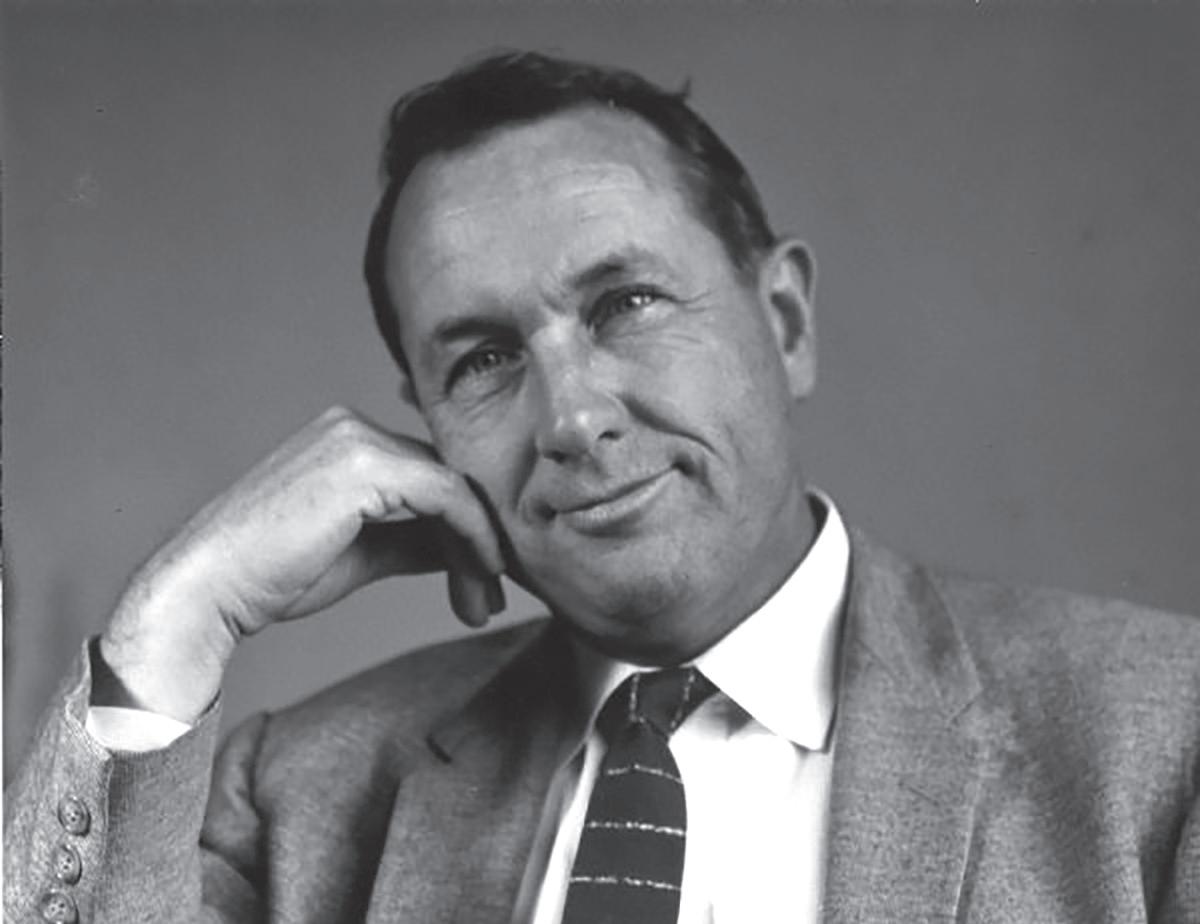
A day after Graham’s death, nearly 300 miners returned to work without a union contract, and under heavy guard.
In June 1933, the Chattanooga Times editor noted that “Blood Wilder” was also becoming “ragged Wilder, hungry Wilder, desperate Wilder,” whose people could no longer exist without some form of relief.
Banking, telephone, transportation, medical and educational facilities all but disappeared at Wilder. Fentress Coal Company was free to continue was Myles Horton called “their ruthless exploitation of its workers.” Some miners escaped to find jobs at TVA’s Cove Creek project, President Roosevelts’s Civilian Conservation Corps and in Chattanooga and elsewhere.
At one time during the Depression, the unemployment in rate in Grundy County, a coal mining county south of Overton County, where the Highlander Folk School was located, reached 72 percent. The unemployment rates in Overton and Fentress Counties must have been almost as high. Had not President Roosevelt ushered in his progressie New Deal, I believe we might have had a revolution.
To give you an idea of how desperate Cumberland Plateau blue collar workers were, here is a letter, written in 1934 from a Grundy County bugwood striker to the President of the United States:
Dear Sir:
If your children were shriveling up before your eyes because there wasn’t enough for them to eat and you had tried every way you could get a paying job or enough relief for them to live on, maybe you would be writing this letter instead of us. Folks like you who own things that make money have a hard time understanding what the working class is up against. We are not blaming you: That’s how the system works. But you can’t blame us for wanting to live even when it doesn’t pay the rich to hire us.
We are American citizens and we’ve got rights.
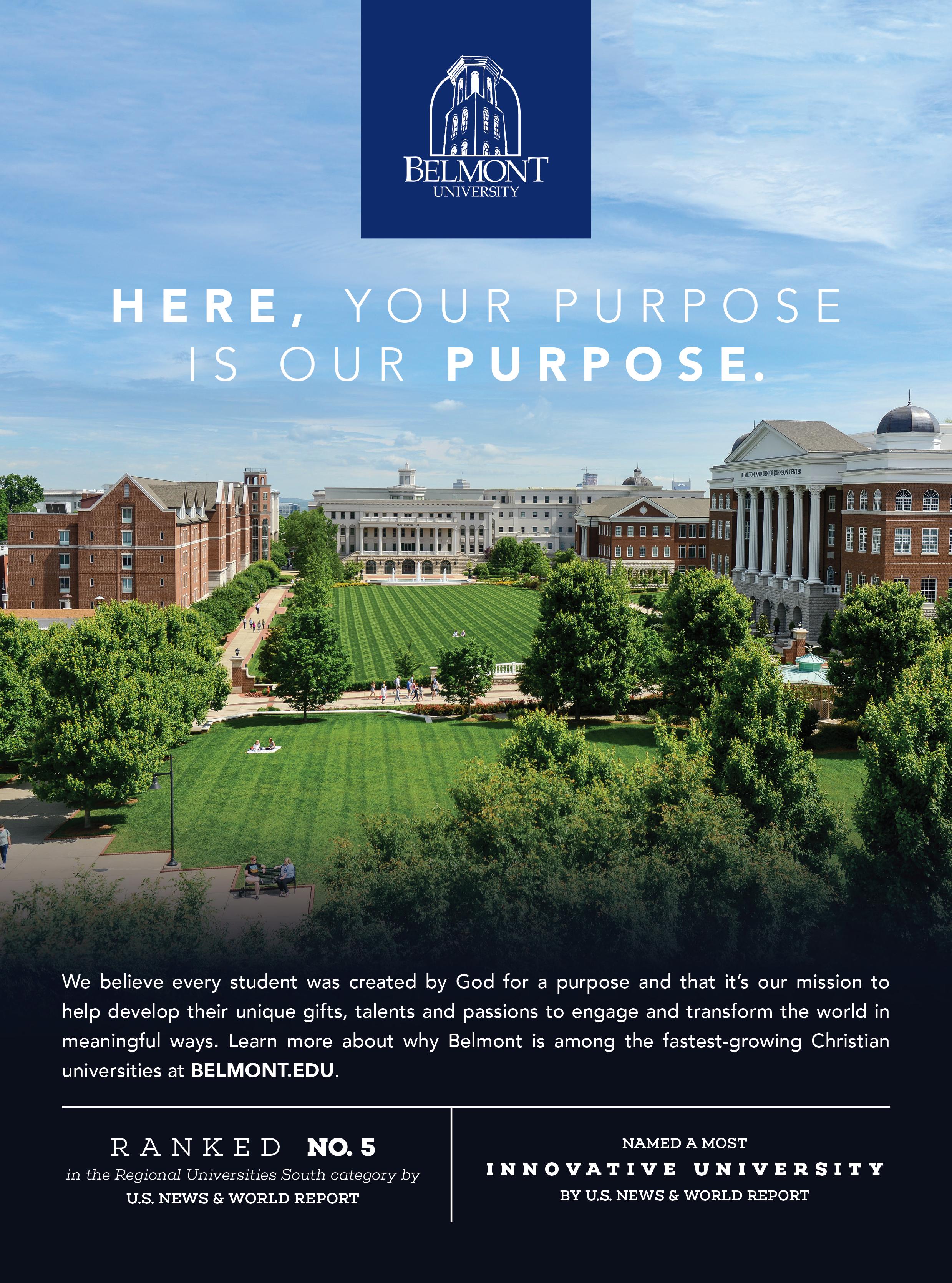
There are a couple of things that make Julie B. known around The Contributor office. She submits writing regularly. And she is also always toting around her service dog, Oreo — a cute, tiny Chihuahua that you might not even notice at first.

Julie describes herself as determined, stubborn, and, “not a fluff person.” We know her as a caring, funny and resilient individual.
Tell me about why you like to write for the paper.
I went to [Contributor Co-Editor] Linda [Bailey] and I said, “Linda, I have an idea, and I want to know if I can do it. I want to write an advice column.” She goes, “what made you think of that?” And I said, “Have you ever watched Sex and the City?” And she’s like, “oh no you can’t put that stuff in there!” Because Carrie writes a sex column. And I said, “no no no, I just got the idea off of the show, because she writes an advice column and I thought that would be good for the paper.” People can write in, and I can answer their questions.” And she goes, “but you have to promise me, no sex columns!”
I love it. I love doing it. It inspires me.
Tell me about Oreo.
He’s medical equipment. He’s for if I have a seizure, and if I pass out he’s trained to bark or
go get somebody. He’s a blessing. He’s my baby.
Is your Native American heritage important to you?
Oh, yeah. When I was born, I was born on an Indian Reservation. When you turn 13, you become a woman on the reservation. You’re not a child anymore. It’s kind of cool because you get a ceremony, they give you a ceremonial knife, and you become an actual woman. I kind of miss the reservation because you kill your own food, you make your own stuff. Women would do pottery and make their own dishes. You didn’t go out and buy them, you made them. It was more rewarding making them than just going to the store.
Do you want to talk about being sick?
I’ve come to terms with dying. I came to terms with that a long time ago. When I found out I had brain cancer, yes, I was in denial for a couple of weeks. Then I figured, why am I doing this? It’s not going to go away magically. I came to terms. OK, I’m dying, let’s just do this and deal with it.
That’s when I started going to tumor doctors, cancer doctors, radiation.
I’ve had doctors say to me, “you have no chance.” I’m a stubborn you-knowwhat. It would have to take God him -
self to come down here and get me.
I’ve come to terms with it and a lot of people they look at me, when they find out I have cancer, they feel sorry for me. I don’t like that. You don’t need to feel sorry for me. I’m not going to keel over right in front of you. A lot of people, they don’t want to be my friend because they think that I’m going to die on them. Yea, I’m going to die. Eventually, it’s going to take my life. But why should I sit and feel sorry for myself or cry about it — it’s not going to do any good.
Thank you for sharing that, I know it’s not something you tell a lot of people.
Now the whole city of Nashville is going to know (laughs). I actually think it’s a good thing that people know because maybe they would stop treating me like trash. I hate to say this about the place that I work at, but people think that because we’re Contributor vendors, we get respect. We don’t. Some people will say “God bless you” or “have a good day.” But there are ones that pass you by, they roll their eyes, or they tell you to go home, or they look at you like you’re dirt on the sidewalk. That’s not cool with me at all. I work really hard even though I have cancer and I’m dying. I get out there when I can and I work my butt off to earn my money. Tech-
nically, the people in Nashville need to learn that we are not out there for kicks and giggles. We are out there to do a job. We’re out there to make it easier on homeless people.
I had someone tell me The Contributor isn’t a real job. I earn money, don’t I? I have a badge, don’t I? Then it’s a real job. I may not sit in a cushy little office with a nice little chair and a computer and earn a nice little paycheck like some people do. But I get up, I get dressed. I go out here and I do my job. And I’m happy doing The Contributor for as long as it takes.
I do need to know something. Do you see yourself as a Carrie, a Samantha, a Charlotte or a Miranda?
I think I’m more or less like Carrie. The others are cool and everything. Carrie, she’s got that will power. She’ll write about anything. She’ll try to get her friends to go places and do things. She’ll pretty much do about anything.
She’s had her heart broken a bunch of times but is still out there trying!
She’s been through a whole lot but she’s still out there, she’s still doing what she loves to do. Most people give up. I’m not one to do that. I’m one to stick with it. It is what it is. I’m one to, as my dad says, pull up your big girl panties and deal! Don’t throw a pity party.
Marie

(cupcake)

the 31,000
According to a member of
campaign, the Movement for 31,000 Affordable Homes is “a campaign to pressure Nashville’s elected officials to make real and immediate progress on addressing Nashville’s serious housing crisis. In 2017, Nashville and Davidson County’s Housing Report predicted that 31,000 affordable housing units will be needed by 2025, a little more than 5 years from now. Five years is a very short time to come up with concepts, designs, land, materials and personnel and actually construct 31,000 homes. So far, there has been no real planning, much less action, on anything like this scale.”
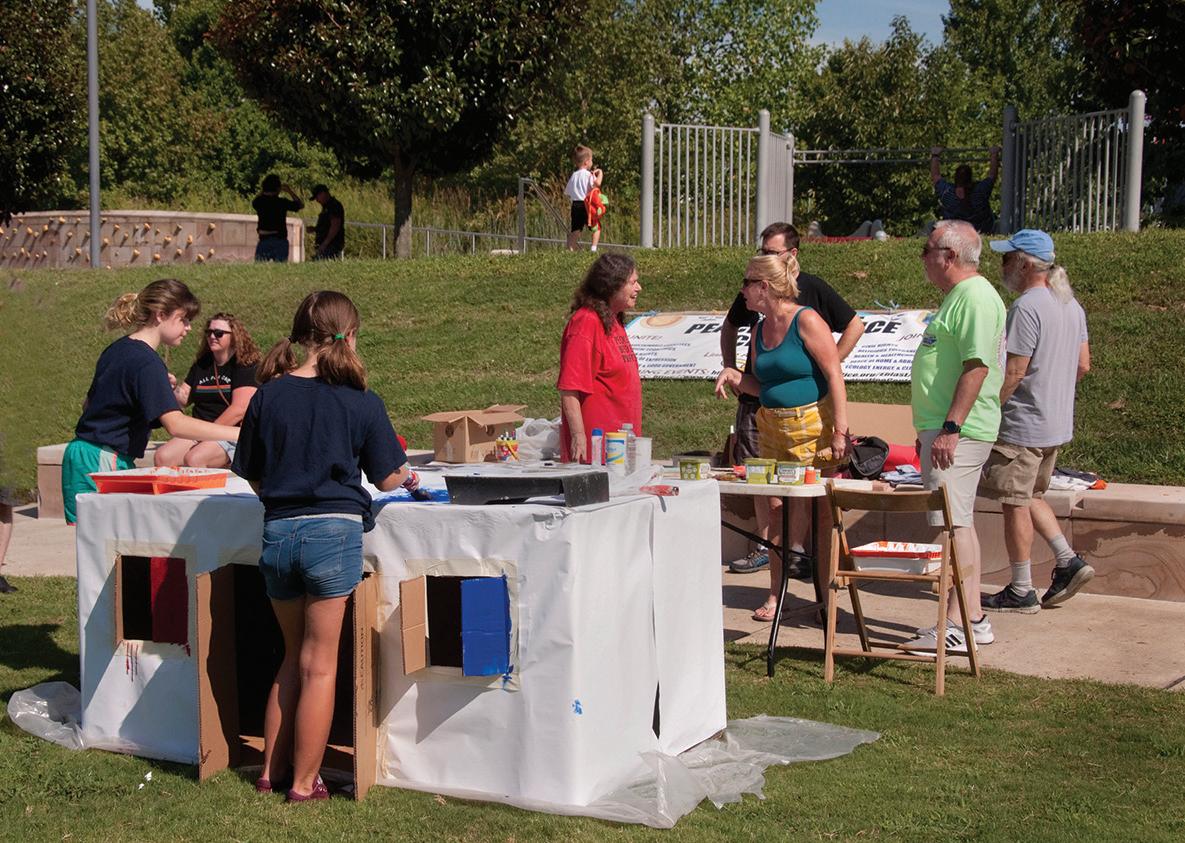

In an exhibition that will run through Feb. 2, the Tennessee State Museum is exploring the “rich and diverse history of Tennessee’s food” in Let’s Eat! Origins and Evolutions of Tennessee Food
“Whether barbecued, fried, roasted, pickled, or chilled, the food of Tennessee, and the southern United States, is a meeting of Southeastern Indian, West European and West African cultural groups,” says Rob DeHart, the exhibition’s curator. “Many cooks, who were primarily women, took the proteins, vegetables, and cooking traditions of each group, then experimented, taste-tested, and created delicious meals. The evolution of Tennessee food continues as foreign-born recent arrivals inspire new flavors.”
All pieces of the exhibition are complemented by artifacts from the museum’s collection, digital storytelling, graphics and location photography, according to a release from the museum. Authors and university professors Alice Randall of Vanderbilt University, Fred Sauceman of East Tennessee State University and Micah Trapp of The University of Memphis, contributed to the research and development of the exhibit.
“The Three Sisters” starts with the story of how Southeastern Indians cultivated crops during the Woodland Cultural Period, planting beans, corn and squash together, which came to be known as the “three sisters.”
This section of the exhibition also looks at how strawberries and corn
played a role in Native American traditions and it tells the story of the state’s Strawberry Festivals and highlights South Pittsburg, Tenn., site of Lodge Cast Iron’s headquarters and the National Cornbread Festival.
“The Buckle of the Barbecue Belt” looks at West European influences on Tennessee Food – the introduction of cattle, pigs and chickens to North America – with visits to Ridgewood Barbecue, Memphis in May and the Kosher BBQ Fest.
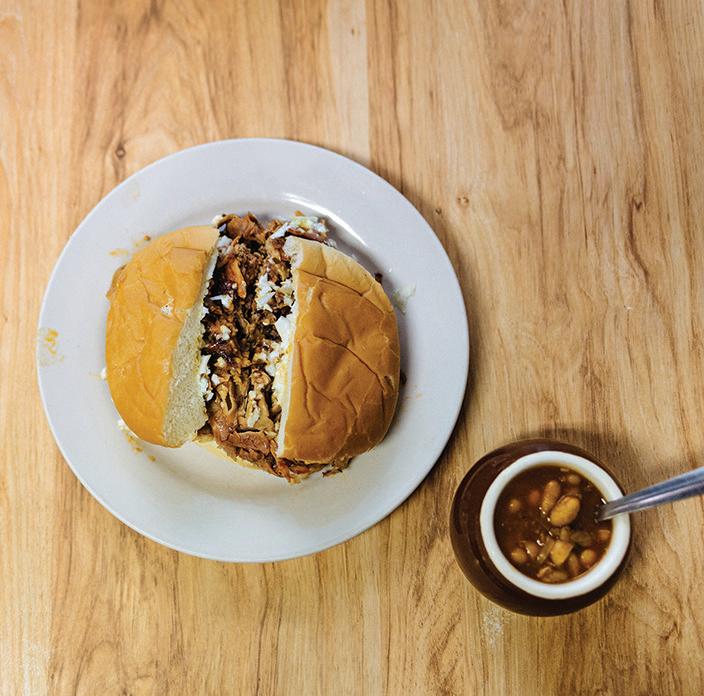

In “A Love for Spices,” West African influences on the state are explored, along with the foods prepared by enslaved persons at the Hermitage. Visitors will be introduced — or re-introduced — to Prince’s Hot Chicken Shack in Nashville and the Four-Way Soul Food Restaurant in Memphis.


“Through picnics and barbecues, Tennesseans have come together at the table, but it is also where they have been divided,” adds DeHart. “For generations, the injustice of slavery and later Jim Crow laws that limited employment opportunities forced some African American women and men to do the cooking in the homes of middleand upper-class whites. This is how much of Tennessee cuisine developed.”

The “Making Do” part of the exhibition looks at some of the dishes that emerged when Tennesseans had to feed their families from limited resources in their kitchens. Their stories live on in many foods we eat today. Visitors will learn about Florence Mathai and beaten biscuits, festivals that celebrate the pungent wild ramp, “slugburgers” from Pat’s Café in Selmer and renowned fermenter, Sandor Katz. In “Cooking for Others,” the exhibition also looks at significant Tennessee cooks Melinda Russell and Rufus Estes and boarding house operator Mary Bobo.
In the “Immigration and Tennessee Food” section, the museum takes visitors to several significant locations in Tennessee, including the Swiss Colony of Gruetli, the Hola Hora Latina Festival in Knoxville, the Global Café in Memphis, Varallo’s Chili and the Conexión Américas Communal Kitchen in Nashville.

And “Preserving Tennessee Food Traditions” introduces visitors to several, including Muddy Pond Sorghum, Helen’s Barbecue, Benton’s Smoky Mountain Country Hams, Boyette’s Dining Room, Vegan Soy Dairy and Book Publishing at The Farm and Cruze Farms Buttermilk.


 BY AMANDA HAGGARD
BY AMANDA HAGGARD
Can you tell me a small bit about each of the eight sections of the exhibit?
The exhibition opens with an exploration of the Southeastern Indian, West African, and West European influences on the cuisine of early Tennesseans. Cornbread, okra, and barbecued pork are just a few examples of dishes that resulted from these early cultural interactions. Then the exhibition looks at how Tennessee food has evolved. One section looks at how “making do” with limited resources has led to innovative recipes. Another acknowledges how people, who out of economic necessity had to cook at restaurants, boarding houses, or for families other than their own, helped spread the recipes and techniques associated with Tennessee food. The importance of immigration for inspiring new flavors is the subject of another section. Preserving the state’s food traditions looks at current food producers who are using tried and true methods of the past. Finally a section on the state’s food festivals sums up the diversity of fare celebrated by the Volunteer State.
When I talked to the curator of the quilting exhibit, she mentioned that it could be difficult to represent the whole state. Did you encounter that while curating Let’s Eat! ?
We had no problems covering the entire state in Let’s Eat because interest in food is so universal. Each region of the state has its own unique food stories to tell.
Tell me a little bit about what visitors can expect from your Lunch & Learn on Sept. 18.
For this exhibit, museum staff traveled across the state collecting stories, images, and artifacts to help define “Ten-
nessee food.” Much of this fieldwork is revealed in the exhibit, and the Lunch & Learn will provide a more in-depth treatment of this culinary journey. And as a bonus Cruze Farm Dairy is coming from Knoxville to provide attendees with free samples of their delicious ice cream! Cruze is featured in the exhibition and is a good example of how a family dairy farm found a way to be successful in the 21st century.
What was the most surprising thing you found while curating for the exhibit?
Conversations about food always shifted into conversations about family and community. Taste is a sense that can stir powerful memories. It was pretty common for people to talk about their parents or grandparents when discussing certain recipes. Community memories such as church picnics, reunions, and even Civil Rights strategy meetings came to light. It surprised me how an exhibition about food really became an exhibition about people.
Why do you think it’s important to document the role of food in culture?
I hope visitors to the exhibition recognize that Tennessee foodways are the product of cultural interactions between many different people of diverse ethnic and socioeconomic backgrounds. Some of these interactions occurred hundreds of years ago while some are occurring today.
What’s your favorite local food item?
Oh, that’s really tough! I’d have to say it’s the prevalence of “meat and threes” in Nashville. You don’t see a lot of those in other parts of the country.
Wednesday, Sept. 18 / Noon to 1 p.m.
Lunch & Learn: Tasting Tennessee, A Culinary Tour of the Volunteer State
This event will look at what defines Tennessee cuisine. DeHart will explore places to eat across the state that distinguishes the unique local flavors for which certain regions are known. “From barbecued ham and buttermilk in the east to soul food and slugburgers in the west, this program is guaranteed to make you hungry,” the program says. Visitors are encouraged to bring a “made in Tennessee” themed lunch.
Saturday, Sept. 21
In Conversation: Tandy Wilson, Erin Byers Murray and Keitlyn Alcantara
Tandy Wilson, Erin Byers Murray, Keitlyn Alcantara will join DeHart for a conversation and Q&A about food, heritage and culture. While free, the Museum’s “In Conversation” events are some of its most popular. To secure your seat, reservations are required.
Thursdays, Oct. 3-24
Let’s Eat! Food Forum Classes
These classes included a pairing of tasting and lecture. The Tennessee State Museum presents a one-of-a-kind series of classes focused on the history and origins of Tennessee’s food traditions.
This road trip takes visitors to encounter the tastes of East Tennessee. Highlights of this trip include a tour of Benton’s Smokey Mountain Country Hams, sampling oldfashioned ice cream and more.
Visit tnmuseum.org for more information.
The Tennessee State Museum is free and open to the public Tuesdays, Wednesdays, Fridays and Saturdays from 10 a.m. – 5 p.m., Thursdays from 10 a.m. – 8 p.m. and Sundays from 1 p.m. – 5 p.m.
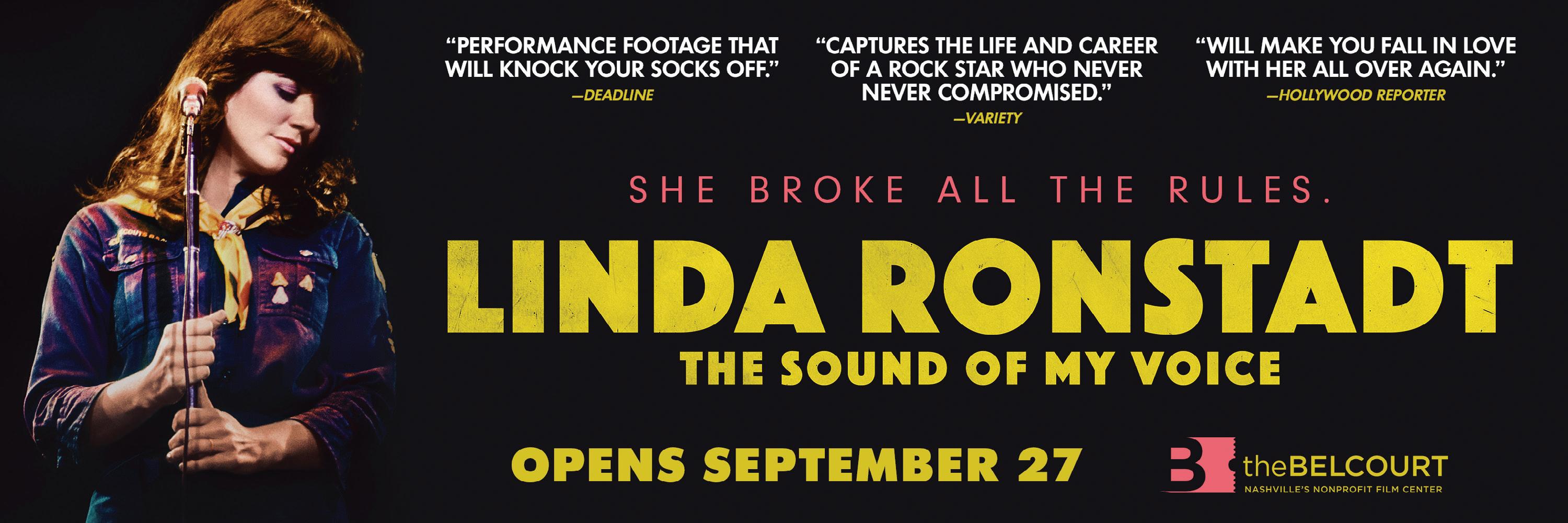
The first episode of the first season of Happy Jail begins like a tourist promotion with shots of sun-blasted beaches, clear calm waters, harp music and a narrator enticing viewers with lines like, “Somewhere in the Pacific an exciting island beckons.”
Cebu island in the Philippines might ring a bell with YouTube bingers: 2007 videos of Cebu Provincial Detention and Rehabilitation Center’s so-called “Happy Jail” inmates performing an ensemble dance to Michael Jackson’s “Thriller” became a viral sensation. But Netflix’ new Happy Jail documentary series begins almost a decade later in 2016 when the center’s management is under fire and the place is bursting with overpopulation in the wake of Philippine President Rodrigo Duterte’s savage war on drugs.
Hilario Davide III was governor of Cebu province from 2013-2019. He’s currently incumbent Vice Governor of Cebu. During his time as provincial governor he hired a close friend and campaign worker Marco
Toral as a consultant on jail management. Toral is an ex-inmate of the Happy Jail who was out on an appeal when he was appointed by Davide because of his “experience.” Toral claims he wants to help the prisoners and that his intimate understanding of their predicaments makes him uniquely qualified. “You can’t guard a jail if you’re not an inmate,” he says. The governor’s political enemies point to the prison being run by an ex-prisoner as emblematic of Davide’s reckless mismanagement and corruption.
The center is primarily a temporary stop for detainees whose cases are in the process of being tried. Detainees who are proven guilty and convicted are sent to a maximum security prison facility. That said, the burden that Duterte’s drug war has put on the system means delays. And detainees at the center who are facing two years in prison – for example – might spend much longer than that in a cage in Cebu while they wait for their chance to prove their innocence in court. Overcrowding is the in-
evitable result – the women’s section of the prison houses 200 detainees in only 6 cells.
As you might expect from a prison documentary, Happy Jail is a morally murky affair. But if there is one clear hero inside those high walls it’s Vince Rosales. Rosales is the original choreographer for the dancers in the viral video that made the prison a global sensation. Rosales was intimidated by the inmates when he first came to work with them. But Rosales persisted and gradually the entire culture of the prison became centered on dance: inmates practice sequences in their cells and on the quadrangle outdoors space at the center of the facility. The prisoners also schedule monthly performances which are open to the public and host tourists visiting from all over the world. Rosales runs various rehearsals and classes at the center morning, noon and night.
Happy Jail is directed by Filipino-American Michele Josue. Josue understands the short-series medium and uses this longerthan-a-feature format to roll-out the history
of the jail and the inmates from the first viral videos to the present. It helps that Cebu is full of characters from ambitious politicians to convict/consultants to the poor detainees whose families can’t afford the trip during the facility’s open house visitors days when husbands, wives and kids of inmates are pretty much given run of the place. Josue reveals these people and their competing points of view so that viewers become disoriented parsing the good guys from the bad guys in an attempt to simplify the story of the center and the people who live and work – and dance – there. Josue won’t have it. Instead of soundbites, Josue delivers deep nuance, orange jumpsuits, brown lives and red tape in high definition.
Happy Jail debuted on Netflix on Aug. 14.
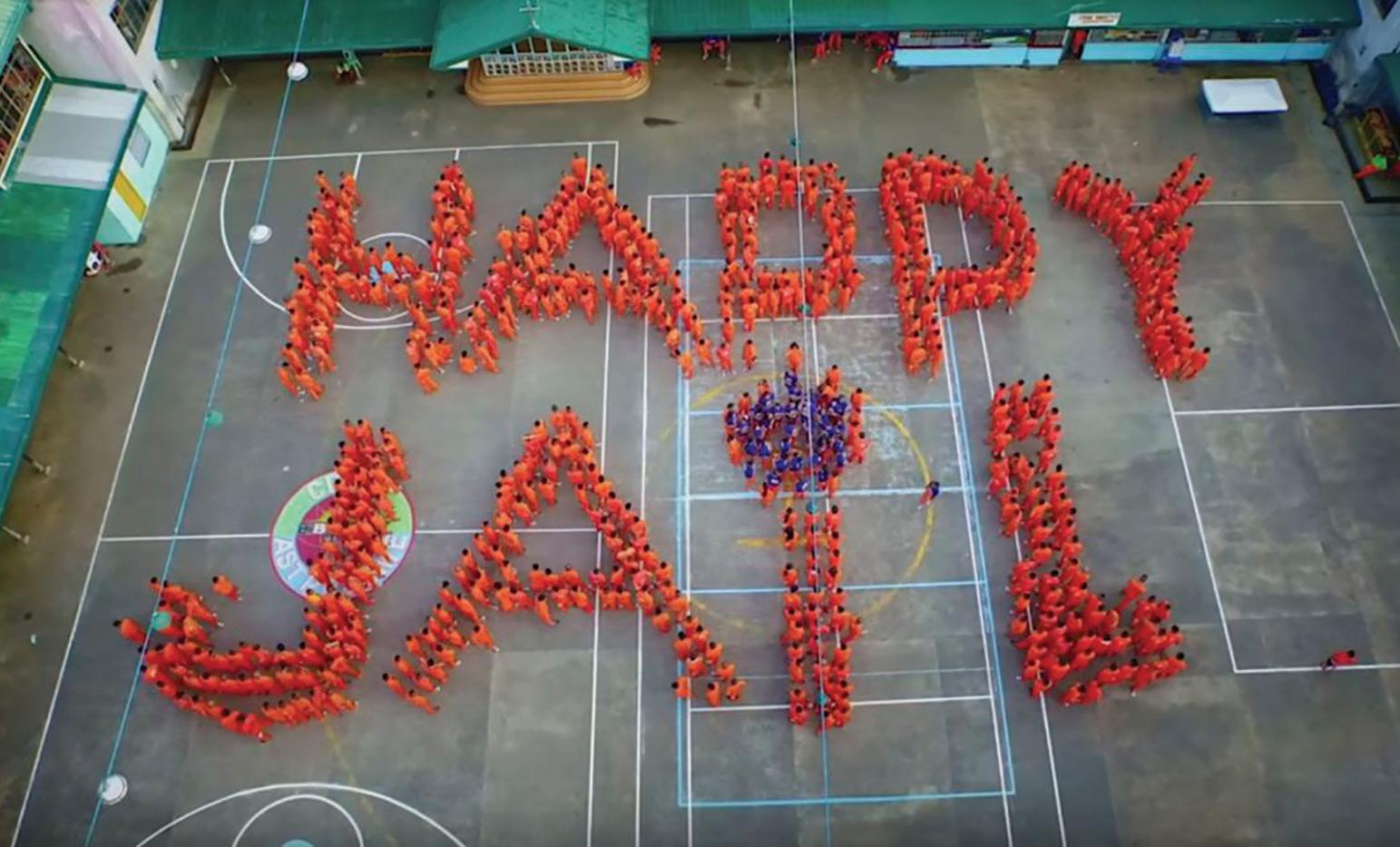
Do you remember the days when anything was possible? The days when you could lay on your back in the middle of a field and look to the clouds to find an entire zoo? The days you sent your kids with those encouraging words, “You can be anything you want to be.” Sometimes it is wonderful to spend some time with those who do not live in the experienced realities of discouragement…the innovators, the dreamers, the visionaries, the hopeful.
Imagine with us for a moment… Nashville’s LĪF NAV, an app, a map, a coordinated path to quality of life goals. Imagine a person in need of service, “Self”. Imagine an app that allows Self to self-identify their needs of housing and circumstances. Imagine Self, being able to check in to a shelter, create a plan of action, sign-up for rapid re-housing funds. Imagine Self walking around Nashville and their phone signaling through geocaches the church that is inviting for a meal, an employer with open entry positions, a landlord with a room to let, or a friend willing to buy a neighbor a cup of coffee. Imagine Nashville offering our social-
ly displaced neighbors the same hospitality we share with the welcomed tourist stranger amongst us. Because I can imagine it. I like to talk about it, in community, together.
The Salvation Army will be once again hosting a series of dialogues to challenge the framing of our future. A future where poverty biases are reduced, along with the hassle factors of poverty processes, and where hospitality for our socially displaced neighbors increases until it matches the hospitality of our valued tourists. The title of this series is the “Red Shield Dialogues: Is it possible?”
The Red Shield Dialogues will concentrate on reframing the future vision for Nashville and Middle Tennessee based upon extending current national best practices. This is a future-oriented series with acknowledgment of our current situation and a challenge for a collective action-oriented vision.
We will start in November with, “Is it possible?... LĪF NAV.” This is a call to believe that we can, and should, make quality of life (food, shelter, employment, housing) navigation as

easy for our neighbors as we do to connect tourists to country music and gastropubs?
On December 21, from sunset to sunrise, we will continue with, “Is it possible?... To be Inconvenienced for Life.” During this longest night of the year, The Salvation Army will invite community members to be inconvenienced for an hour by joining in the conversation that can save years of life. On average those living outside of housing live shorter lives. Do we dare ask together what we can do to reduce the days of homelessness and increase the years of living?
The series will continue with “Is it possible?; ‘To Connect Data Wide Open’; ‘Stop Calling People Homeless’; ‘LĪF Nav through Tech4Good’; ‘Design Creative Conflict’; and ‘Maximize the Mission of The Salvation Army’”.
The Dialogues will once again have guests to lead the primary conversation and open meeting at The Salvation Army to consider our community’s response. The Dialogues are designed to extend ideas and challenge
the mediocrity of the status quo. You are very welcome to join us in the conversation, in challenges, in the mission of meeting human needs.
Will you imagine the future with us?
Hope, the catalyst to enjoying a summer day in the fields looking for a zoo in the clouds. Let Hope be our catalyst so that faith is not expressed in our quiet prayers and polite conversation but is our lifestyle of aggressive love for our neighbors.
Major Ethan Frizzell serves as the Area Commander of The Salvation Army. The Salvation Army has been serving in Middle TN since 1890. A graduate of Harvard Kennedy School, his focus is the syzygy of the community culture, the systems of service, and the lived experience of our neighbors. He uses creative abrasion to rub people just the wrong way so that an offense may cause interaction and then together we can create behaviorally designed solutions to nudge progress. Simply, negotiating the future for progress that he defines as Quality of Life in Jesus!
When we re-launched The Contributor newspaper in November 2018, our executive director’s husband John played a very fitting song on his guitar. It was, “Here Comes The Sun” by The Beatles. It was fitting because the lyrics made several key points applicable to what was happening with the paper at that time. Here are just a few examples:
This song says, “It feels like years since [we’ve] been here.” Even though the paper was only out of print for 7 months, it did feel like years.
The song also speaks of “smiles returning to the faces,” and that was definitely true that day!
Next it says, “Here Comes the Sun—It’s alright.” For the first time in a long time it felt like it
just might actually be true!
After the meeting I told John how much I enjoyed his performance and how much it reminded me of some of the happier me at times in my childhood. (There were many jam sessions around a kitchen table when I was a kid.)
I even offered him suggestions on future performances, which he seemed to take in stride. He thanked me and said something to the effect of, he couldn’t go wrong because it was The Beatles, and everybody loves The Beatles. Technically, I guess he was right. I mean everybody does generally love The Beatles—just not me.
I hesitated a bit and finally said, “My family was always more Elvis fans.”
Afterward I found myself wondering why I have such an aversion to them when I do love all kinds of music and The Beatles are iconic!
Fast forward a few days and I was awakened from sleep by a memory of my mom teaching me to sing a song titled, “Nobody’s Child” when I was 3 or 4 years old. I’ve always found the lyrics to be somewhat depressing. To give you an idea, here’s the chorus:
I’m nobody’s child
I’m nobody’s child
Just like the flowers
I’m growing wild No daddy’s kisses
And no mummy’s smile Nobody wants me I’m nobody’s child
(At least that’s how she taught me to sing it.) It’s definitely not for the faint of heart! The lyrics don’t improve much throughout the song, but my mom could relate to it somehow. I could tell by her reaction as we sang it together.
Sadly, I could relate to the song as well. I have always felt unwanted and unloved especially by those who are supposed to take the lead in this regard.
Since I couldn’t sleep that night when I woke up with this song memory, I decided to look up who sang the song and lo and behold it was The Beatles! I guess that explains a lot. (Interestingly I couldn’t find a single recording of just them singing that song. Maybe they realized it’s kind of a
downer compared to their more upbeat tunes.)
Now, thanks to John, I have a happier memory to associate with music by The Beatles. John’s joy and enthusiasm definitely rubbed off on me. I found myself singing along and having a good time that day along with everyone else.
Just as the song says, “Here comes the sun—it’s all right.” And indeed it is or at least it will be.
Now every time I hear a Beatles song I smile and think of John.
I’ve come a long way since then. I may have grown up feeling like “nobody’s child,” but make no mistake, I am the queen of OHB and Central Pike—all that’s missing is my tiara!
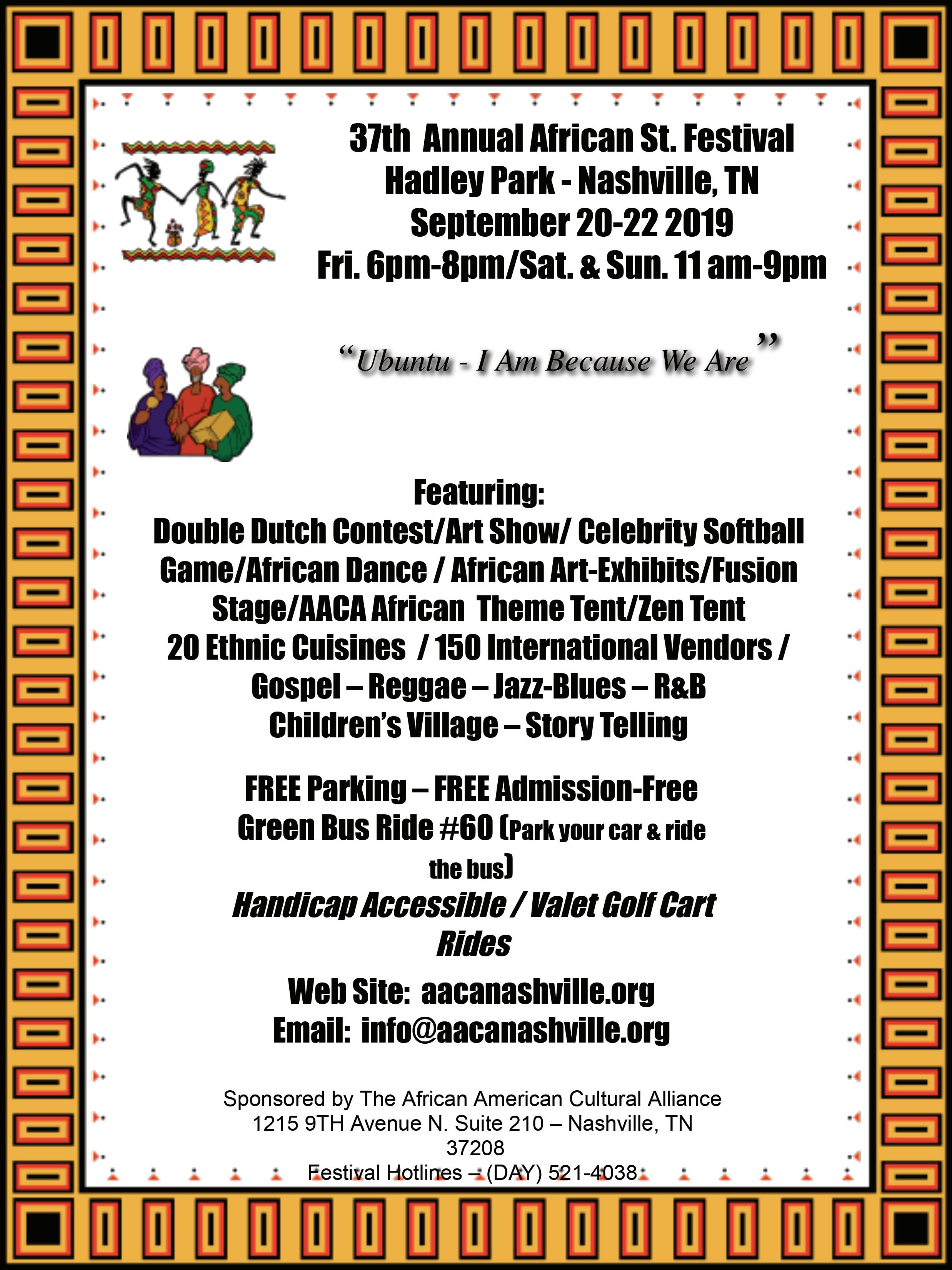
Hello. My name is not important but this is just a letter to inform the community about who is.
You see, there is this special lady named Laurie Green. She works with an organization named, the Southern Alliance for People and Animal Welfare (SAFPAW). They help all sorts of people that have pets and are homeless or previously homeless.
I first met Laurie back in 2014 when the Lord blessed me with an apartment. I was homeless for 3-5 years on and off. I
have mental disabilities and thought I’d get a service animal.
Well, a girl was moving out and had the cutest little kitty she could not take with her so I decided, why not?!? At first we thought Susi (the kitty) was going to adjust just fine. As it turns out Susi was a Samson. I don’t know if you’ve ever had male cats, but unneutered ones can be territorial and spray horribly. I was going crazy because I had no money to neuter him. That’s when The Lord put Laurie
Green and SAFPAW in my path.
She picked up Samson and he seemed to like her right away. Maybe he glimpsed her golden soul. They say animals can sense such things. He went right to her and now I believe in love at first sight. She took him for a night and he was neutered, given his shots, dewormed and treated for fleas. I believe he was very smitten with her. She treated him with such kindness. No wonder he didn’t miss me! But I sure missed him!
When she dropped him off the next morning, he almost acted like he wanted to stay with her. No doubt she had spoiled him. She sure had touched his little heart!
Well, after all this time I have considered myself a friend of Laurie’s and am very lucky and blessed the Lord put her in my path. She is such a golden soul! She truly cares for her family with fur. She has all kinds of fur children, not to mention all of her extended family. They probably look forward to all the snacks and goodies
Nashville is a loving and kind city of the South known as the “Palace of Music” because of its legacy of music performance. But this city is full of unclaimed talent. And the question is why?
How is it that individuals haven’t recognized talent such as Mike A., aka, “Natural Born Terror”? Yes, the stage name might be real exotic, but his talents are of high honor.
I was first introduced to him on an MTA bus ride home. I was sitting on the bus when an old school traveler with a banjo over his shoulder got on the bus. Being curious, I asked him if he was here to make it big since I hadn’t seen a banjo in decades. He replied, “Nah.” He was just passing through.
“Can you really play that thang?” I asked “Son if I have it, I can do it,” he replied.
I laughed right along with the other passengers. Mike told the guy if he can play, Mike could come off his dome with some lyrics that would match. Old School looked at the driver and grabbed his banjo from around his shoulder and began to play a wonderful tune and a moment later Mike A. jumped in with some profound rap lyrics. Then he went to some singing and finished off with gospel. After it was over, everyone was applauding.
I started talking to Mike and found out he moved to Nashville from Arizona and instantly became homeless when he realized the housing
prices are so high here. He and his lady friend had been searching for a place to rent, then began looking for a temporary affordable motel to live in and then ended up staying in his car for a time period.
Only by the grace of our almighty God, and the constant striving for a way out, and by cutting hair, and by doing women’s hair, while writing lyrics, and performing shows they no longer have to live in a car.
The pleasures of meeting a striving new upcoming artist are of my highest honor. Mike A. Aka. “Natural Born Terror” is a modest young man that excels through his verbal metaphors and fulfilling every lyrical artist’s dream to make it to the top. At the same time,
she provides daily. Also her kind, quiet company. They look to and for her as much as she does them! Every vet issue I’ve ever had, she is the very first person I call.
She is just one of those rare gems that you come by. One of a kind. She may not always answer her phone right away, but I text her and she is right on it!
Laurie, if you’re reading this, may God bless you and please know you are a golden soul and have touched so many lives. P.S. We <3 Milo and Kizmet!
he is an average roundabout “Super Dad.”I have had the privilege to meet his youngest son and see where he cuts and does women’s hair.
While on stage he does his thing as a performer, drawing the attention of the crowd on a positive aspect. He is one that strives to continue to climb to the top on a positive note. He gives back to the society he is a part of. He has been known to give a part of himself to Nashville in many ways. At times it’s free haircuts. At times it’s free hair dresses. At times it’s free concerts.
With Natural Born Terror’s artwork and T.G Entertainment’s collaborative actions they can become a magical team of the new millennium.
Are you guilty of leaning to your own understanding at times? I know I am. May times we can look at something and what we see is actually just what our vision leads us to see, but sometimes what the eyes see is totally different from what really is. Ya see, the eye don’t have all the facts. And to be honest, many are judged by what the eye saw. Only if they knew the facts. You know I’ll give you an example of that. The rich man saw Lazarus at his gate, knowing Lazarus was a poor man, but the rich man just didn’t have the heart to help the poor. Sometimes we get to thinking, there’s got to be something the poor man can do to provide for himself. Maybe the rich man asked himself many other things.
One thing I’ve learned in my walk with Christ is if God convicts my heart to do something, I know then that it’s OK. No matter what the facts are or circumstances are, all that’s important at that time is to be obedient to what God has spoken to your heart to do.
It’s almost as simple as passing a vendor on the street corner. You don’t know what led him there. You don’t know his or her life story. We always make assumptions as what’s to be instead of doing things God teaches us to do in his word. Ignoring God when he convicts our heart can lead to hardening of the heart. So learn to see with your heart and not with your mind. It prevents us from leaning to our own understanding.
BY JULIE B., CONTRIBUTOR VENDORThey lie to me. They don’t respect my PTSD. They just walk in without knocking and don’t say who they are. They don’t do anything that they say they’re going to do. They told me they would get me a good box but never did. They knew about my PTSD and still put me in a bad situation and I have gotten a stress rash from this. The only reason I moved in here is because of my brain tumor and to get my treatments and that is all going to stop because I am not going to have to find another place to live because of these people.
They say one thing and turn around and do another. They gain your trust and then they turn around and tell you that you can’t afford the place that they put you in and demand that you move somewhere that you would have to walk half a mile to a bus stop and
anything else you wanted to get to. Reminding you all that I have cancer and seizures and a brain tumor. That walk could kill me.
And another thing: People told me I can’t do things because of my service dog because I wouldn’t show papers that he was a service dog. And by ADA Law I don’t have to show anything stating that he is a service dog. How many disabled people they have told that they can’t do something because of their service dogs? They’re going to learn that it’s against the ADA law to do what they’re doing and they can lose their license or their fundraising for that.
I’ve been kicked out, disrespected, asked to show papers. This is wrong what they’re doing to the disabled and there service dogs and now they’re breaking the ADA law.

The beginning of autumn always comes with a certain melancholy longing. Summer is ending and cooler winds are blowing into town. It brings back memories of all the falls gone by. All the things that were and almost were. I think nostalgia is a healthy response to a change of the season, but why does it make my chest so sore? Maybe it’s a kind of regret. It’s a feeling that longs for the way things were but also for the way things might have turned out. This fall, when you start to feel that ache behind your ribcage, give yourself some time to take it apart. Keep the memories, keep the fondness, but let the regret go. Those other Septembers got you this far. Let this September take you further forward.
So I was eating dinner and working on your Hoboscope, Libra, and everything suddenly went wrong. I got up to wash some tomato sauce off the cuff of my new astrologer’s robe and my smartphone fell out of the front pocket and into the sink. Of course, I followed proper wet-phone protocol. I turned off the power, dried it off and threw it into a bag of rice. And then I immediately started looking for somebody to blame. Why do they make them so sensitive to water? It must be a conspiracy! And why do they make the front pockets on these astrologer’s robes so loose? And why wasn’t I more careful? But Libra, you and I both know that sometimes accidents just happen. It’s not about whose fault it is anymore. It’s about what you and I are going to do next.
The brown marmorated stinkbug has it pretty rough. First, there’s that horrible name. There’s really no part of the name “brown marmorated stink bug” that is helpful in, say, a social situation. But even if it were named “Brandon” or “Emily” nobody would like the brown marmorated stinkbug. They’re an invasive species from east Asia which, when it isn’t destroying North American crops in droves, is crawling along the wall of your bedroom waiting to be squished so it can produce it’s eponymous stink. I know I can tend to be over-merciful to the underdog, but I can’t help but wonder if there’s some good lesson we can learn from those little
brown marmorated fellows. Maybe it’s just that some things are so thoroughly unappealing they aren’t worth your time. It’s great that you’ve been trying to make the best of a bad situation, Scorpio, but maybe it’s time to look for a better situation instead. Even stinkbugs agree.
How do some nice, hot chocolate chip cookies sound, Sagittarius? Great! We’ll use your grandmother’s recipe! Let’s see. There’s no butter in the fridge, but there’s some old vegetable oil in the cabinet, we’ll use that. And I didn’t find any chocolate chips, but there’s half a box of Raisinets in your jacket pocket from the movie last weekend. Oh, it looks like you’re out of all-purpose flour, too, but there is still some powdered quinoa that your gluten-avoidant former roommate left behind. And this hazelnut syrup should make a good brown sugar substitute. Now just mix, bake and voila! Wow, Sagittarius, These cookies are really … something else. Something besides cookies, I’m afraid. It’s a good week to restock your cabinets, friend. Forget about creating a new finished product and go back to the basics. Make sure you have what you need before you move forward.
So ever since I dropped my smartphone in the sink, my life has gotten so much simpler. I’m not constantly checking Facebook and email to see if anything great or interesting or horrible has happened. I mean, it’s only been three hours, but this could really change my life for the better. Maybe I don’t need a smartphone anymore. I’ll have more time to read and think and sit quietly in stillness. Instead of Googling every piece of information I come across, I’ll just be content to live in the mystery of unknowing. I’ll learn how to get places instead of always relying on my GPS. I’ll go visit my friend instead of texting them. I’ll … I’m sorry, I’m having trouble breathing and my heart is racing and I think the walls are closing-in! Please, come back to me smartphone! I didn’t mean any of it! Please! … ahem. Excuse that outburst, Capricorn. I’m just a little emotional since the accident. For you, however, I have a question. What can you live without? What things or habits are keeping you stuck? I think you can let them go now, Capricorn. I’ll text you about it as soon as I get a new phone.
Sometimes I wonder who would play me in a movie about my life. It would probably either be Jonah Hill, Will Smith, or Betty White, depending on what direction they wanted to go with the story. I wonder who would play you. I mean, it’s unlikely that they’ll make a movie about either of us, but if they did, who would you want to be in it? More importantly, what would you want it to be about? Wouldn’t you want it to have action, comedy, romance and a happy ending? And if that’s the movie you’d want to see, what are you sitting around reading a newspaper for? Get busy living out the plot of your life story. We’ll worry about casting later.
Every morning at 11:30 a crowd gathers around Buckingham Palace. They want to see the ceremony. They want to watch the iconic guards in their bright red uniforms and tall furry hats swap places with another set of identically stoic soldiers. The changing of the guard is essentially a ceremony built around some guys going on lunch break. I think that’s important for you to remember this week Pisces. Whatever great work you’re doing, however important and revered, however challenging, you’ve got to take a break eventually. When you do, make a ceremony of it. Put as much pomp and importance into the end of your shift as you do into the work itself.
Henry David Thoreau wasn’t much for smartphones. I’m not sure if he didn’t like the idea of being stuck in a two-year contract or if he just preferred the options and screen size of his iPad. For whatever reason, in all his writings, Thoreau never once mentions owning or operating a smartphone. I’ll tell you what he did like, though. Long walks. He wrote in his journal in 1851 “Methinks that the moment my legs begin to move, my thoughts begin to flow.” And, you know, methinks what hethinks makes some sense. If you feel like you’re stretching for ideas today, maybe put down the smartphone and get your legs moving instead. You and Henry Dave may have more in common than you thought.
You’ll never believe what’s in store for you this week, Taurus. If I thought you’d believe, I might tell you. But you just don’t have it in you to believe.
You aren’t that kind of believer. Should I give you a hint? I could. But you’d never guess, because it’s hard to guess something if you aren’t even willing to believe it. It doesn’t matter Taurus. Whether you believe in the future or not, it’s coming.
So, it turns out we’re all going to die. Disappointing, I know. Of course, we treat this unfortunate reality as avoidable most of the time. But maybe today try something different. Try to picture, vividly, the day of your death. Do you want to be old? Most people hope they get old. Do you want to be surrounded by your loved ones? Or would you rather be at the top of Mount Everest having accomplished your greatest life’s goal? Whatever the picture, this is the perfect time to start working toward that inconvenient ideal. The last day will come. What will you do to make it the best day it can be?
I’ve been worried ever since I dropped my smartphone in the sink last night. But while it was drying out I found out that there’s a new version of my phone coming out. And with my old phone in this state, I’ll have no choice but to buy one! It’s bigger and faster and it does all kinds of great things that are going to make my life so much better! I’ll be twice as productive! I’ll have more time and energy to be the kind of person I want to be! I’ll be kinder to others and more responsible with my time! I’ll … wait a minute. It looks like my old phone is starting up just fine. Maybe it didn’t get that wet after all. How disappointing. Sometimes what seems like a tragedy is just the kind of clarifying event that can show us what we really want. Cancer, don’t wait until your phone gets wet to be the kind of person you want to be.
Think back, Leo. Think back to before lunch, before Tuesday, before this year. Think even further back than that. Think back to before you made a regular practice of remembering anything at all. What’s your earliest memory? How old were you? Maybe you were 4? Maybe 3? What about before that? Who were you before you had a story? What did you know before you could remember any of it? Now that I’ve got you off balance, Leo, I want to give you a little push. Start at the beginning and tell yourself your story. Who you were is who you are. If you don’t remember, you won’t be.


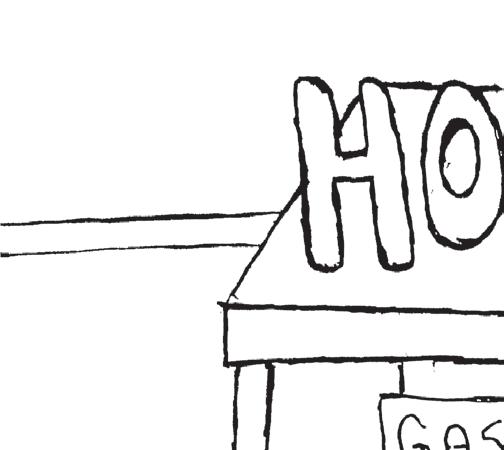
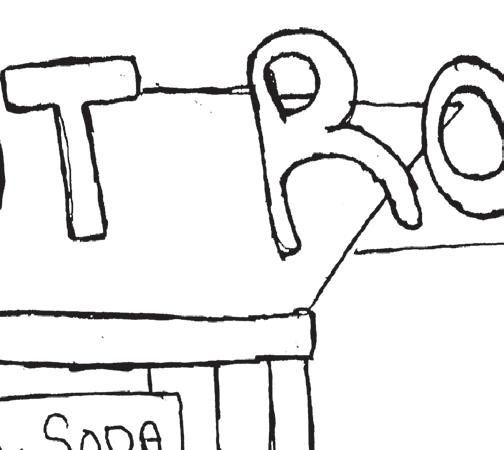
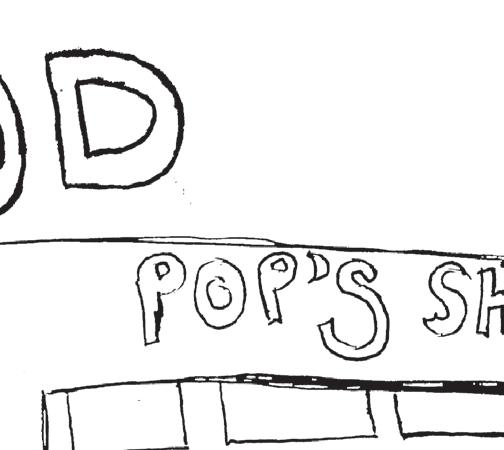




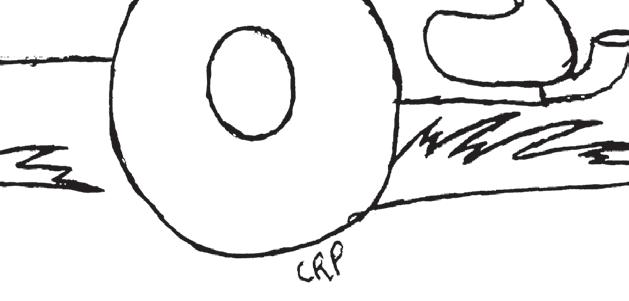
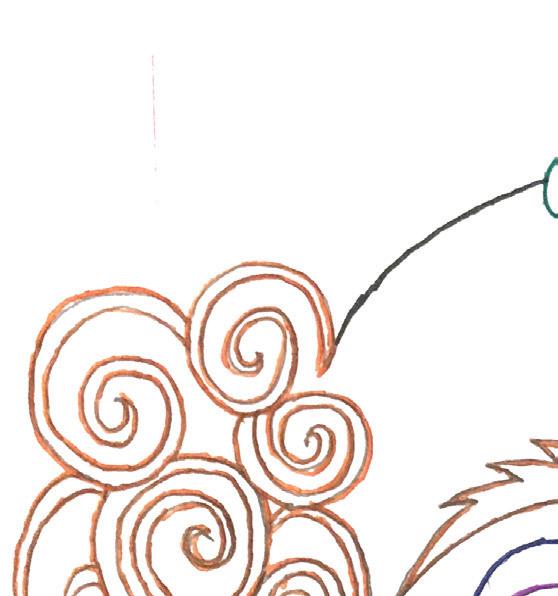
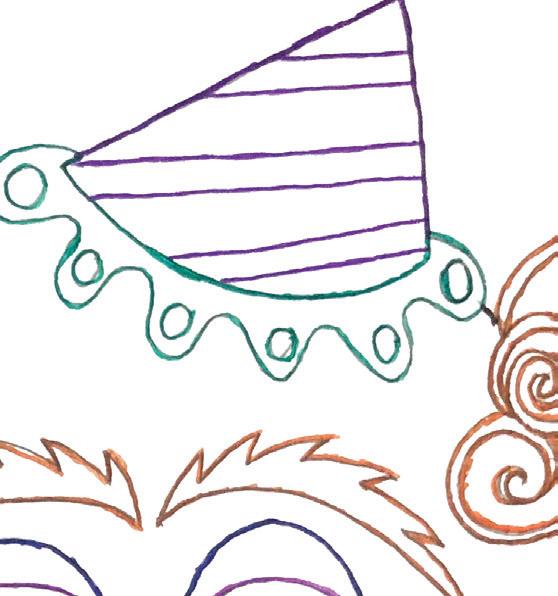



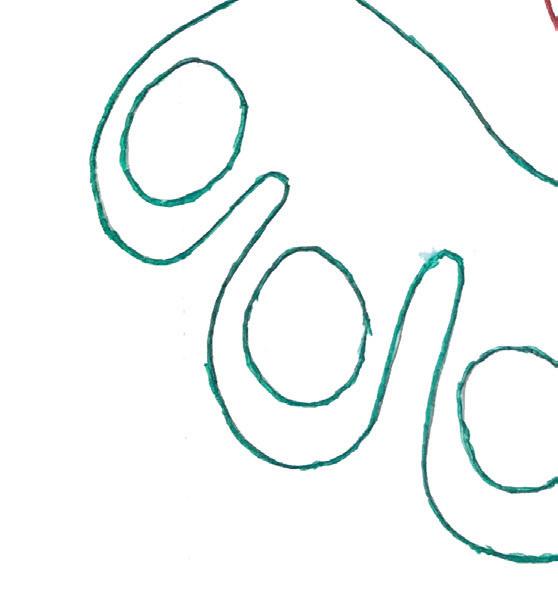


HAROLD B.
After a good nights sleep
We are all feeling fine Look out the window A lot of sunshine
Gonna be there

Before the bell rings
Finally back in school
Let’s see… what tomorrow brings
VICTOR J.
Giving is something you do to help, heal, love, care for someone or yourself.
HAROLD B.
We’re out of the house
Walking kinda straight Little bit tired But feeling great
Instead of here
Staying on the right path And being good this year
BY DAVID "CLINECASSO" C.JOHN H.
I’ll always love you, God, commanded me to do so.
It’s one of the most important things he wants us to show. Some days I may wage, many I may just smile. Being a light to this world will always be my style.
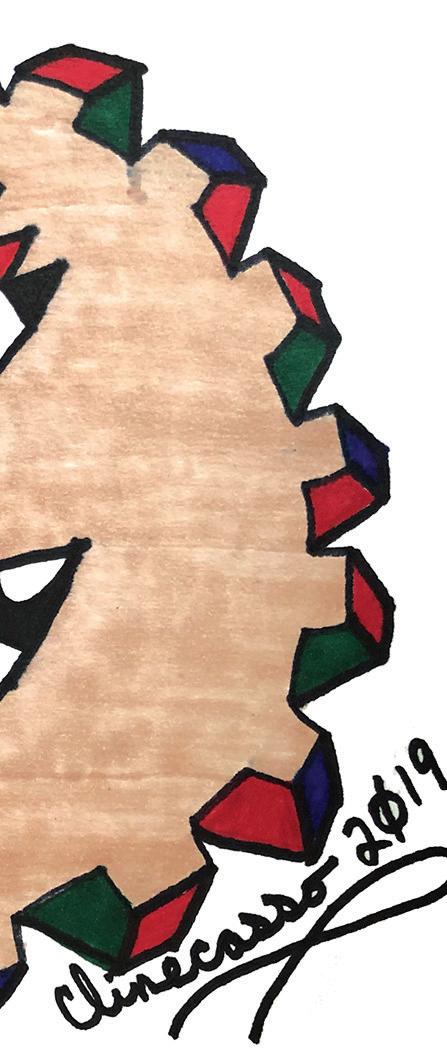

I awake late in the night to collect my thoughts.
I look into the sky. Please God, correct my faults like a tall tree that grows far into the sky.
Love should always grow, up until the day you die.







